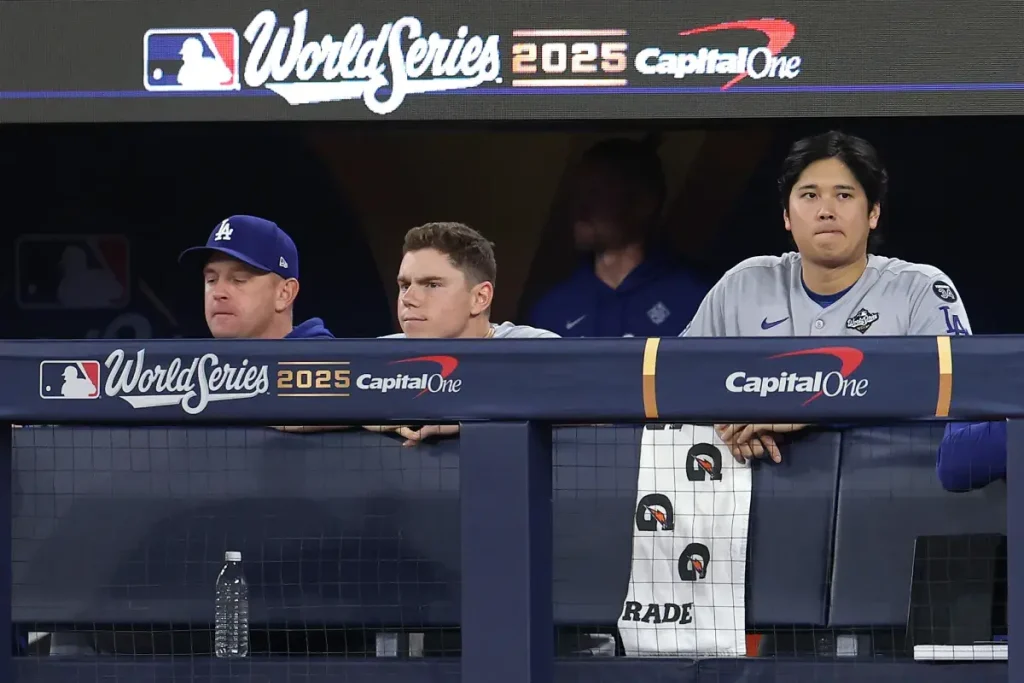Shohei Ohtani: A New Chapter in Baseball History
In December 2023, the Los Angeles Dodgers made headlines by signing Japanese superstar Shohei Ohtani to what was then the most lucrative contract in sports history: a staggering 10-year, $700 million deal. The investment raised eyebrows and expectations, but few could have predicted just how quickly it would pay dividends. In his debut season with the Dodgers, Ohtani not only secured the National League MVP award but also helped guide the team to their first World Series championship in a full season since 1988. His remarkable first year in Dodger blue has redefined what fans and analysts thought possible for a single player in modern baseball, combining elite hitting with dominant pitching performances that have drawn comparisons to legends like Babe Ruth.
As the Dodgers found themselves pushed to a decisive Game 7 in Toronto, they turned to their $700 million man once again—this time asking him to perform a feat rarely seen in modern baseball: starting the most crucial game of the season on short rest. Just four days after throwing 93 pitches in Game 4, Ohtani was tapped to serve as both starting pitcher and designated hitter in the winner-take-all finale. This decision highlighted not just the extraordinary versatility that makes Ohtani unique in today’s game, but also the immense trust the organization placed in him during their most pressure-filled moment. Manager Dave Roberts acknowledged the unprecedented nature of the situation, noting that while Ohtani would open the game on the mound, his exact workload remained fluid: “With Shohei, it could be two innings, but it could be four innings. I’m not sure we’re going to slot him. We’re going to have to talk to him first, and where he’s most comfortable.”
The strategy to start Ohtani on the mound rather than bring him in from the bullpen reflected careful consideration of baseball’s unique rules surrounding two-way players. As the only designated two-way player in Major League Baseball, Ohtani benefits from a rule that allows him to remain in the game as a designated hitter after his pitching duties conclude. This crucial distinction meant that starting him preserved his bat for the entire game—a significant advantage given his offensive prowess. The alternative—having him enter from the bullpen—presented practical challenges that made little sense, particularly the difficulty of warming up mid-game if he were needed to pitch in the same inning he had appeared as a batter. The decision showcased how the Dodgers have learned to maximize Ohtani’s unique skill set within baseball’s rule framework.
The Dodgers’ bullpen, despite facing criticism during parts of the regular season and earlier playoff rounds, had emerged as a surprising strength during the World Series against Toronto. Several relievers had delivered clutch performances: Will Klein contributed five scoreless innings, including a remarkable four-inning stint to close out Game 3; Justin Wrobleski had efficiently retired most batters he faced without allowing a run; and veterans like Clayton Kershaw alongside newcomers such as Edgardo Henriquez, Roki Sasaki, and Jack Dreyer had all kept the Blue Jays off the scoreboard in their appearances. This collective bullpen resurgence provided Roberts with multiple reliable options to follow Ohtani, creating a patchwork pitching plan that could potentially navigate all nine innings of the championship-deciding game.
In many ways, the decision to start Ohtani in Game 7 represented the culmination of baseball’s evolving approach to pitching. While previous generations might have automatically turned to a frontline starter on short rest or relied exclusively on bullpen arms for such a crucial contest, the Dodgers instead crafted a hybrid strategy built around their uniquely versatile superstar. This approach—having a two-way player open the game before transitioning to a traditional relief corps—symbolizes how modern baseball has moved beyond rigid roles toward more fluid, matchup-based strategies. For Ohtani personally, taking the ball in Game 7 offered a chance to add another extraordinary chapter to his already legendary career, potentially cementing his first season in Los Angeles with a performance that baseball fans would remember for generations.
The World Series showdown against Toronto’s Max Scherzer, himself a future Hall of Famer, set the stage for baseball theater of the highest order. While Ohtani’s exact pitch count and innings limit remained undetermined heading into the contest, one thing was certain: the Dodgers’ historic investment in the Japanese superstar had already paid extraordinary dividends. By putting the ball in Ohtani’s hand to begin the most consequential game of the season—while also counting on his bat throughout—the Dodgers demonstrated their complete faith in his unprecedented abilities. Whether the gamble would result in championship glory remained to be seen, but the mere fact that Ohtani would both pitch and hit in Game 7 of the World Series confirmed what many had suspected since his arrival in Los Angeles: baseball had never seen anyone quite like Shohei Ohtani, and the sport’s future would forever be changed by his remarkable talents.


